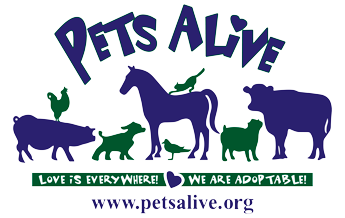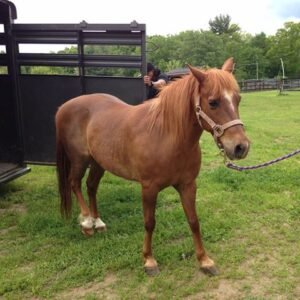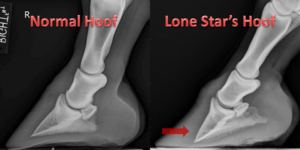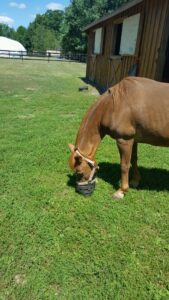Lone Star, the pony we rescued from possible euthanasia, is making great progress in recovering from laminitis, but his on-going medical needs continue to very expensive. You can help us continue to treat Lone Star by donating NOW to our Saving Pets Challenge — AND your donation will be matched by Sidewalk Angels Foundation giving a double impact to your donation! BUT HURRY! The Saving Pets Challenge and the matching gift will conclude on Thursday, August 4, at 1:59pm ET.
Read on for more about Lone Star’s health update and how your donations helped him.
Two months ago, Pets Alive took in a very special pony named Lone Star. Lone Star was facing a very debilitating condition called Laminitis and prevented him from walking without pain. Lone Star’s owners wanted to do the right thing for him, but didn’t have the proper environment or the ability to treat him adequately to rehabilitate him. Because of the amount of pain he was enduring, they were faced with having to euthanize him. After speaking to the vet, we believed we could save Lone Star’s life and find him a great home. Treating Laminitis can be very costly and time consuming, and is a condition that can be set off by several factors. While most people think nothing could be better for a horse or pony than to be in beautiful, large, lush field of grass, for Lone Star, this is exactly what caused the Laminitis.
Laminitis is a condition that usually starts from eating too much of the sugars found in grass. As a result, the Laminae, the cushion in the hoof wall, gets inflamed and separates from the internal structures of the hoof. Without that support, the bone inside the hoof will actually start to drop, or rotate, downward, causing an immense amount of pain. X-rays were taken of all four feet to assess the damage inside the hoof, and our vet worked with a farrier to develop shoes and pads that stabilize the hooves and provide comfort for his feet. The shoes and pads gave Lone Star almost immediate relief, but it still took a couple of weeks for his condition to stabilize. His feet needed to be soaked in icy water several times a day for as long as he would tolerate. Lone Star now gets his “special sneakers” (shoes and pads) every four weeks.
X-rays were taken again 4 weeks later to be sure there was no more rotation in the bones of his feet. We were on the right track and Lone Star was now moving around comfortably and happy. For horse owners, Laminitis can be one of the biggest fears because sometimes the horse can’t be made comfortable and quality of life becomes and issue. However, if caught and treated in time, it can be managed quite easily.
In addition to his hoof issue, when Lone Star arrived, his heart rate was double the normal rate. To treat this condition, Lone Star needed to be removed from eating grass entirely. Over time as his health improved, we allowed him to graze in our pasture. He now goes out for short periods in what is called a “grazing muzzle”. This allows him to be out in the pasture but limits the amount of grass that he eats while still giving him the freedom to graze and roam like all happy ponies.
We at Pets Alive are dedicated to treating all the animals in our care with the medical attention that they need, but we need your help. Early donations for Lone Star helped us treat his initial medical needs – and THANK YOU for your gift to Lone Star! But his on-going medical expenses are costly.
- The cost of x-rays, exams and tests alone to assess Lone Star’s initial status was $1,200.
- The initial shoeing to make him comfortable was $400 for the first two times the farrier came out.
- But…Lone Star will continue to have shoes and pads every 4 weeks (an average of $200 each time) – plus it costs about $100 a month to feed and care for Lone Star.
We continue to monitor his status and hope that with watchful eyes, we can prevent any complications or re-occurrence of Laminitis, but Lone Star’s care and needs are on going.
You can help us replenish our Medical Fund and continue to help Lone Star and all the other animals at Pets Alive by donating NOW to our Saving Pets Challenge — AND your donation will be matched by Sidewalk Angels Foundation giving a double impact to your donation! To date, you’ve helped us raise over $19,000 during the 5-week Saving Pets Challenge. Sidewalk Angels Foundation has donated a mid-campaign matching gift of $9,833 that is included in the overall amount raised – but more matching opportunity is available. The Foundation has pledge up to $25,000 in matching donations!
BUT HURRY! The Saving Pets Challenge and the matching gift will conclude on Thursday, August 4, at 1:59pm ET. Your donation will be used to replenish our Medical Fund to help Lone Star and so many other animals at Pets Alive.
Thank you so very much1



